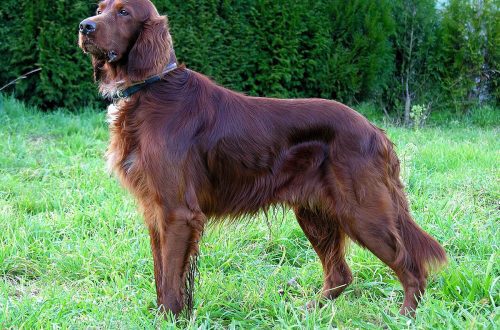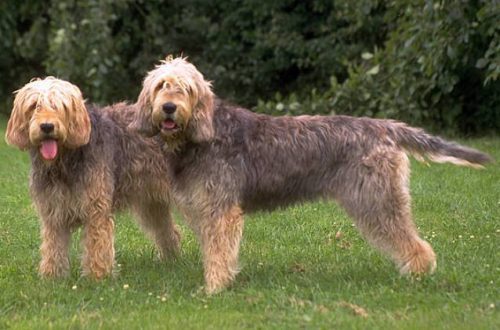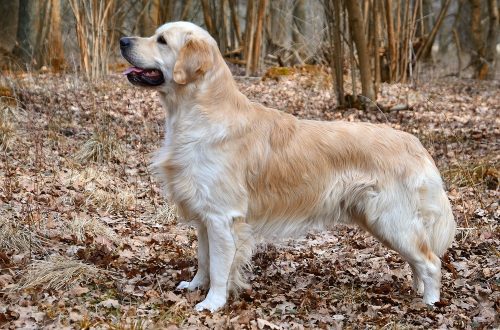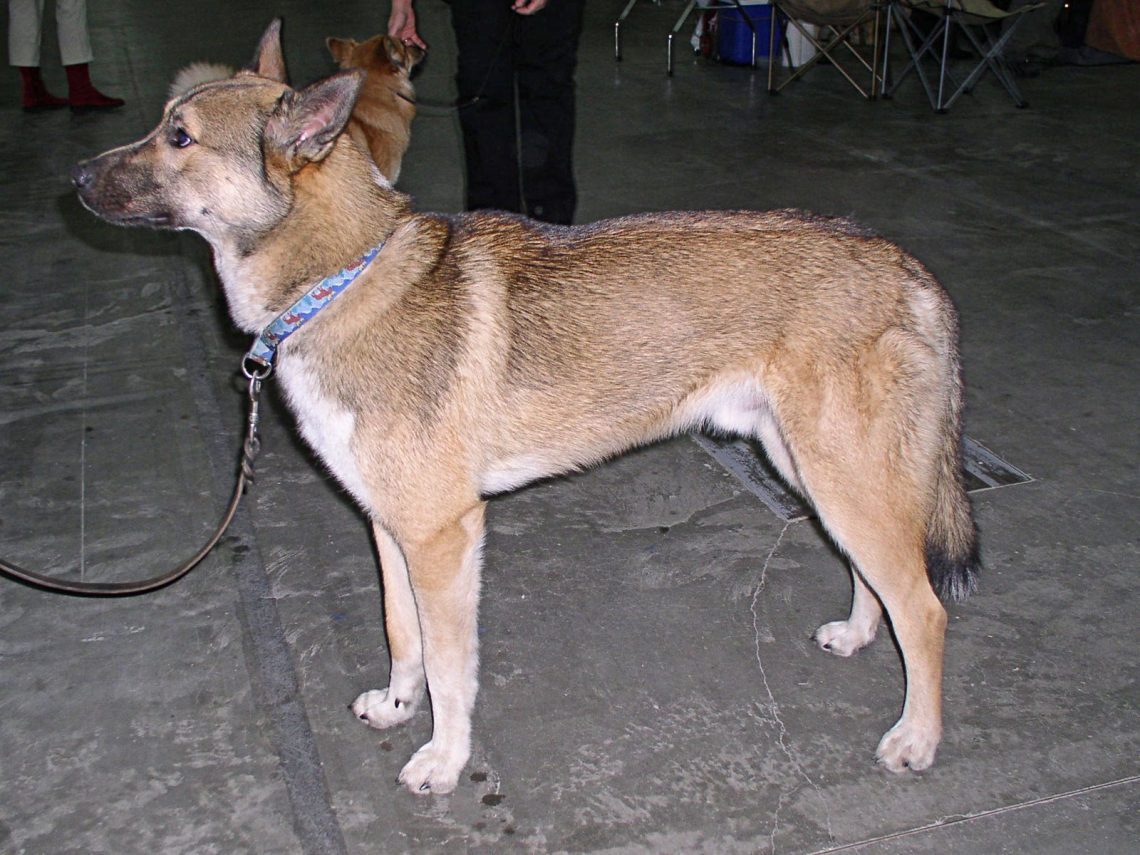
East Siberian Laika
The East Siberian Laika is characterized as a hunting breed with the makings of a sled. This is the largest of the Laikas, bred on the basis of the Evenki, Amur and other hunting dogs of Eastern Siberia.
Contents
Characteristics of East Siberian Laika
| Country of origin | Russia |
| The size | Average |
| Growth | 53–64 |
| Weight | 19–22 kg |
| Age | 12–14 years old |
| FCI breed group | Spitz and breeds of primitive type |
Basic moments
- The East Siberian Laika is the slowest maturing of all Laikas. Animals reach full physical maturity by 2.5-3 years.
- The defining characteristic of the breed is the absence of malice towards a person under any circumstances.
- In the central part of Russia, VSL are not as popular as their relatives, the West Siberian Laika, so it is not so easy to find a nursery where breeding is carried out in accordance with established standards.
- The breed needs a long walk and systematic hunting trips, so taking its representative into the house simply because “I wanted a pretty husky” is unacceptable.
- Only the one who leads the dog to hunt and feeds is able to control the behavior and obedience of the East Siberian Laika. Laika does not perceive the authority of other members of the family, although it treats all familiar people kindly.
- In everyday life, Easterners are unpretentious: they do not need the services of a groomer, willingly eat any food offered by the owner, and live in an aviary and kennel in winter without any risk to health.
The East Siberian Laika is the owner of an outstanding flair, a born hunter, able to get forest trophies even without preliminary training. Balanced and peaceful, Easterners do not create problems in everyday life and do not torment the owner with momentary whims. The only place where the dog is not averse to “steer” is the forest lands, where the AFL are accustomed to feeling one step ahead of the owner. However, the breed has every reason for this – in the hunt for fur-bearing animals and elk, East Siberian huskies are out of competition.
History of the breed East Siberian Laika
Modern East Siberian Laikas are the descendants of hunting dogs, which have been bred since ancient times by the indigenous population of Siberia. The main occupation of the ancestors of the breed was hunting for fur-bearing animals, since the fur trade in Russia has flourished since time immemorial and was considered a profitable craft. But since the population density behind the Ural Mountains has always been low, the animals bred and lived in relative isolation. Ultimately, this led to the stratification of the Laika clan into offspring, which differed from each other in performance and external data.
The first attempt to describe hunting dogs was made at the end of the 19th century by the researchers Shirinsky-Chess, Liverovsky and Krestnikov. After traveling through Siberia and Transbaikalia, breeders identified 20 types of aboriginal huskies, based on the geographical principle of distribution of breeds as the basis for their descriptions. As for a full-fledged classification, it was possible to create it only in 1949, when members of the Soviet society Glavokhota agreed to standardize animals. It was decided to single out four main breeds – Karelian-Finnish , Russian-European, East Siberian and West Siberian Laika . Moreover, only a temporary standard was written for the East Siberian Laikas, since there was very little actual material about the exterior and working qualities of the Easterners.
The breed owes its modern standard to the Soviet cynologist A. V. Geyts. For 13 years of work, the specialist has studied more than eight thousand East Siberian Laikas and systematized their external characteristics. It was at his request that the boundaries of the growth of the breed, as well as the index of body elongation of dogs, were established. In addition, the area of origin of the VSL was narrowed. If earlier, in addition to Siberia, the Far East was also considered the birthplace of animals, then after the study of A.V. Geyts, the eastern outskirts of the country were excluded from this list. The final standard, which fixed the specific colors of the breed, as well as the type of skeleton, was approved for the Orientals in 1981. The breeders and exhibition commissions are still guided by him.
Character
The East Siberian Laika is an aboriginal Siberian breed, carefully bred by the Buryats, Evenkis, residents of the Amur and Baikal regions. For centuries, the main task of these dogs was to hunt large animals: bear, elk, lynx, sable. Living in the territory of the East Siberian forests and the Ural Mountains, this breed has become invulnerable to the harsh and changeable climate.
Representatives of this breed are distinguished by a strong hunting instinct, therefore they are not suitable for ordinary life. They have a huge reserve of energy, are extremely smart and attentive, quickly react to the appearance of the beast. These dogs are indifferent to people with normal socialization . The unique feature of the East Siberian Laika is its devotion to the first owner, and no other person, even a family member, will replace him.
These dogs train quickly, remembering even complex commands . They are not prone to dominance, but should see the leader in the owner from a very early age. They may have difficulties with other pets: we must remember that the East Siberian Laika is an aggressive hunter. Like many hunting breeds, these dogs are extremely reckless, so you can participate in games and competitions with them like agility and flyball.
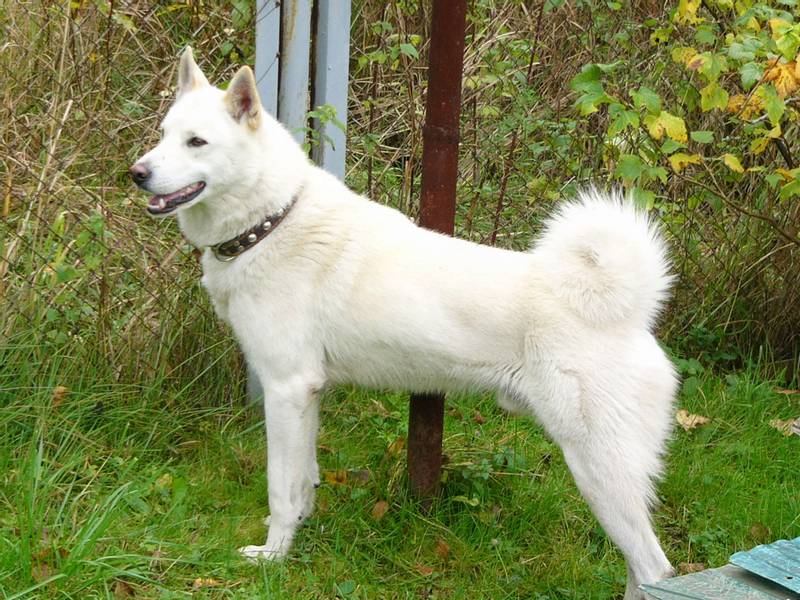
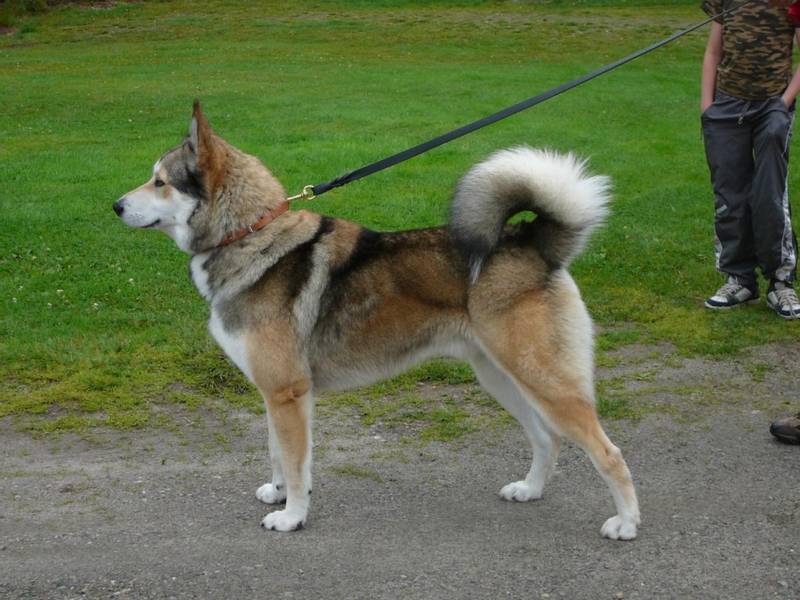
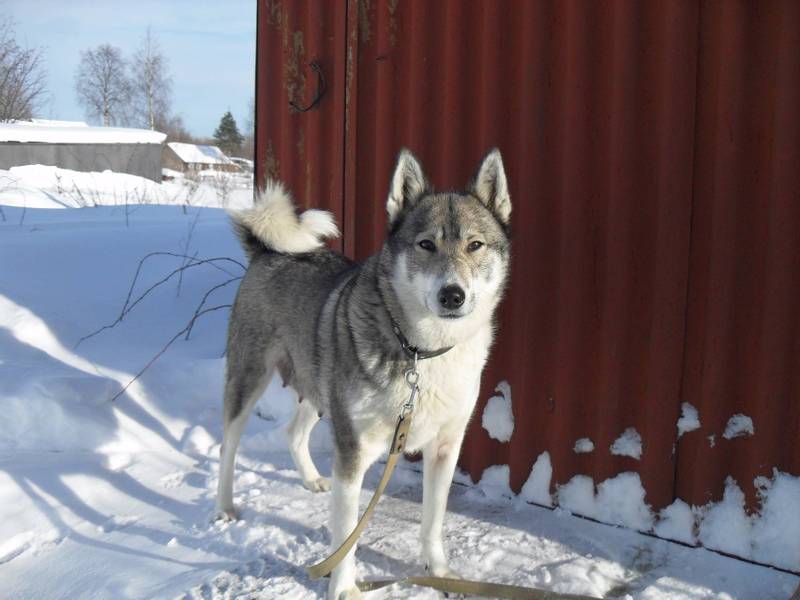
East Siberian Laika breed standard
Initially, individuals with a strong type of constitution were considered exemplary. However, modern rules are more loyal to animals with lean muscles. Nevertheless, it is unacceptable to compare two dogs in the ring in polar types of condition. Sexual dimorphism is also inherent in Easterners: the growth of a thoroughbred male should be at least 55 and not more than 64 cm, females – from 51 to 60 cm.
For working VSL, the body stretch index is important. In males, it ranges from 104-109, for females – within 107-112. It is not difficult to determine visually which dog is more suitable for fishing activities. To do this, it is enough to compare the height of the animal at the withers with the length of the body. If the second value exceeds the first, this is a good sign. Laikas with a stretched body, sufficient height and a strong constitution are more enduring and easier to work in snowdrifts. At the same time, too large, as well as too low individuals, are considered an unenviable acquisition. The former are harder to lift and with age acquire a friable constitution, the latter quickly get tired and do not work well in snowy conditions.
Head
When viewed from above, the skull has a wedge-shaped outline resembling an equilateral triangle. The superciliary ridges of the breed are unexpressed, the stop is smooth, the forehead is almost flat. In puppies, there may be a bulge in the frontal zone (growth prilobina), leveling off by 3-4 years.
As they grow older, the head of the East Siberian Laika expands in breadth due to an increase in muscle mass. The muzzle of the dog is rough, normally filled in the area under the eyes, of a slab type. There are no signs of damp lips.
Jaws
The jaws are massive and wide with tightly closing incisors. The bite of the premolars is wolf-type, that is, open. The grip of the jaws is deep and strong.
Eyes
Distinctive features of the eyes of the East Siberian Laika are an oblique slit of the eyelids, an almond-shaped shape, a moderate fit (the eyeballs are not protruding, but they are not “drowned” deep into the orbits). The iris is brown or dark brown, regardless of color.
Ears
The shape of the VSL ear resembles an isosceles triangle with a pointed or slightly rounded apex (ear tip). Standing almost at eye level, in addition, a slight collapse is noticeable when the back edges of the ears are not parallel to each other.
Neck
The necks of the East Siberian Laikas can be both rounded and slightly oval in cross section. Set the neck in relation to the body at an angle of 40-50 °. The length of the neck corresponds to the length of the head.
Frame
The East Siberian Laika is a strong and moderately “pumped up” pet. Characteristic for the breed, the stretching of the silhouette is provided by a straight, wide back. In this case, the lumbar region should not be excessively long. The croup is wide, with a moderate slope in the back. The bottom is fitted, with a slightly pronounced transition from the sternum to the stomach.
The chest of the breed is deep, strong, often lowered a couple of centimeters below the elbows or reaching their level. The standard allows an oval chest in cross section, but an ovoid chest is not acceptable. An important nuance: for fishing in a snowy area, a dog with an overly developed chest is not the best option, since when the front legs are extended, the wide sternum prevents the shoulder blades from turning outward.
limbs
The straight and parallel forelegs impress with their strong bones and strength. The shoulders are moderately oblique, the angles of the humeroscapular joints are within 90-100 °. Elbow processes pronounced, looking back. The pasterns are not long, have a slight slope.
Hind limbs without curvature, parallel to each other. The articulation angles are clearly marked. The lower legs are noticeably longer than the thighs, the metatarsus is vertical. The paws of the Easterners gather into a ball, with outlines resembling a circle or an oval. The presence of dewclaws on the hind legs is unacceptable.
Tail
Crescent-shaped or rolled into a ring-shaped design. In a straightened form, the tip is at the level of the hocks or shorter by 1-2 cm.
Wool
The straight spine is characterized by a rigid, rough structure. The undercoat is silky, but dense, acting as a natural sweatshirt. On the ears and head, the coat is short and tight. On the neck and shoulders, hair grows more abundantly, turning into a rich collar. At the withers, the dog is also relatively long.
The legs of the VSL are covered with short smooth hair, slightly lengthening on their inner part and forming fringes on the hind limbs. The paws of the breed are well pubescent. This is especially noticeable in the area of the fingers, where the hair breaks through miniature brushes. The tail of the dog is protected by straight coarse hair, which is noticeably longer on the inside, but does not merge into a dewlap.
Color
Traditional colors of Eastern European Laikas: solid black, black and piebald, red, gray and brown of all shades. The black and tan color is also considered valuable, especially if it is its caramous variety (light spots of tan on black). Combinations of the listed suits with white are also allowed.
Care
The East Siberian Laika has excellent health, not susceptible to genetic diseases. However, a recumbent lifestyle can adversely affect such a dog, so it is important to make her life as saturated as possible with sports and physical activity.
Because the East Siberian Laika has thick double fur that is prone to shedding, it needs regular grooming and brushing. It is worth washing the husky as needed, on average it is enough to do this once a month, limiting yourself to daily washing of the paws after a walk. Also, do not forget about dental hygiene – they need to be cleaned of plaque and tartar several times a month.
Conditions of detention
The East Siberian Laika cannot live in a city apartment: she needs a lot of space so that she can give free rein to her energy. This dog will do great living in a spacious area. The yard must be fenced due to the developed hunting instinct of the dog. Do not keep her on a leash or in an aviary – this can be bad for her health.
It is better to hire a professional trainer so that the dog understands the person perfectly and does not need artificial restrictions. The East Siberian Laika can live inside the house only if the owner is ready to clean the wool regularly. Walks of the East Siberian Laika should be active and varied.
East Siberian Laika – Video
Hunting with East Siberian Laika
Unlike West Siberian Laikas , Easterners are not so popular among the hunters of the Central Strip. The reason for the low prevalence of the breed lies partly in the fact that its representatives have less gambling in their work than their relatives in the section. At the same time, VSL is distinguished by a large breadth of search, high sensitivity and excellent viscosity. A valuable quality of East Siberian Laikas is their ability to quickly adapt to changing realities. In fact, the animal is able to hunt in any climatic zones, from the taiga wilds to the forest-steppe.
Like most Laikas, VSLs are considered to be versatile hunters. However, the breed works best with elk, bear, wild boar and small mustelids. The hunting technique of the dog is to track the beast by smell, bark at it and detain it until the owner arrives. The right Easterner follows the trail in silence and only speaks when the game is in sight. Another feature of the breed is the search at a trot, turning into a gallop and less often into a walk. In field trials, the talents of commercial East Siberian Laikas are evaluated according to the following indicators:
- flair;
- speed and accuracy of search;
- voice;
- the nature of barking (no hysterical screams, running around and throwing on a tree where a squirrel sits);
- surveillance and viscosity (perseverance in the search and detention of the beast);
- obedience;
- attitude towards the killed prey (it is allowed to lightly bite the shot squirrel, but not to tear).
Each husky has its own hunting preferences. Accordingly, when acquiring ASL, calmly accept the fact that the degree of enthusiasm for the process of catching trophies in different conditions will not be the same. For example, some dogs enjoy hardcore bear prey, while others prefer walking moose. In addition, having tried to work “in a big way”, the East Siberian Laikas lose interest in small fur-bearing animals and do not show much zeal in hunting for squirrels.
Among the hunters, it is considered undesirable to involve the East Siberian Laika in hare hunting. Carried away by the pursuit of the oblique, the dog moves too quickly away from the owner and does not hear commands. As a result, the hunter does not have the opportunity to catch up with the pet, and the irritated dog deals with the prey on its own, which is unacceptable in principle. For the same reason, it is not recommended to allow East Siberian Laikas to roam uncontrollably in the forest in summer. In such unsanctioned trips, the dog learns to hunt, strangle and eat light game like young elk and hares, and then, during seasonal hunting, it no longer adheres to the rules, spoiling the prey with its teeth.
Education, training, coaching
It is not customary to go through OKD with the East Siberian Laika, but you will have to master the basic pet management techniques. Despite the fact that in terms of habits, huskies are close to their wild ancestor – the wolf, it is still important to correct their actions. The first command in the life of a puppy of the VSL is “Come to me!”. The breeder himself or the owner of the nursery must introduce it into use when the time comes for feeding newborn offspring. In the future, this will facilitate the learning process for the buyer.
As the baby grows up, the traditional call can be replaced by the approach of the owner’s whistle. For a timely response to the call, whether it be a voice command or a whistle, the pet should be rewarded. Remember that among hunters, individuals are valued who do not lose contact with a person in the fishery, as well as coming on demand. The second basic command is “No!”. Without it, it will be impossible to control the temperament of a four-legged hunter on the hunt. Commands “Drop it!” and “Location!” The puppy should understand at 3 months of age. To accustom to the collar and leash also begin at 3 months.
At the age of 5-6 months, the East Siberian Laika begins to be trained on a squirrel. Moreover, if there is an adult experienced husky at home, it is advisable to also connect it to the case. In the process, the puppy will adopt the habits of an older fellow tribesman and quickly learn the correct hunt. From the very first lessons, it is necessary to eradicate the traditional mistakes of a young individual. A professionally trained ASL should not rush into trees and gnaw on branches where a squirrel sits. It is also impossible to allow empty barking and torment of a shot animal. A disciplined dog should calmly sniff dead prey, sometimes bite a little, but not try to tear it or eat it.
Sable hunting, which is often practiced with East Siberian Laikas, is considered a transition to a higher level, since, unlike the squirrel, this furry animal escapes the chase more masterfully. It is better to train an orientalist on sable on the first snow, when traces are clearly visible. The optimal age for this activity is the same as when working with protein, that is, 5-6 months. In more detail, the methods of training the breed for various types of prey are described in the book by A. V. Geyts “East Siberian Laika”.
It’s worth trying to walk on an elk with a husky when the pet is one year old, and preferably two. The optimal month for the first nataska is September, when wild artiodactyls start rutting and when shooting of males is allowed. Typically, mining is carried out in two ways. The first is a long pursuit of an animal by a husky at a distance of at least 15 m, without sharp attacks. The second is a gambling race, furious barking and active attempts to grab the prey by the muzzle and neck.
In both cases, barking should be done from the head of a potential victim. If the easterner gives a voice, keeping at a distance from the elk, and runs away at the first turn of the elk, this means that the dog is either very young and has not yet developed the correct technique, or simply does not have the ability to work with large prey. A good elk is considered to be a husky, capable of following an artiodactyl for at least 5 hours and doing several sweeps (stopping the elk and barking it from the head). The status of a pro is assigned to single individuals who are ready to follow the moose and set hooks until the morning of the next day.
Important: it is better to go for squirrels, sables and muskrats with one husky, since the presence of a “partner” will distract the animal from the process. At the same time, it is recommended to hunt elk, wild boar and bear with a couple of easterners.
How to choose a puppy
- If a puppy is purchased for hunting for a specific animal, check with the seller about the success of the baby’s parents in this matter. For example, for moose hunting it is better to take offspring from moose huskies and undesirable from easterners who work strictly on protein.
- The prey of hunting in males and females of the East Siberian Laika practically does not differ. However, males are more likely to get lost in the forest, as they are distracted by the smells of flowing bitches, which can be several kilometers away. Accordingly, if you are not ready to spend hours or even days looking for a lost dog, choose “girls”.
- Make a choice in favor of puppies from spring litters. Such babies are healthier because they grow and develop in the warm, sunny season.
- Specify the age of the sires of the litter. Breeding females of the East Siberian Laika are ready for mating at one and a half years, and males at two years. Offspring from too young parents, as well as from too old, have poor health. It is optimal when mature and old males (6-10 years old) are bred with 3-year-old females and vice versa – young two-year-old males are bred with 6-9-year-old huskies.
- Assess the general condition of the puppies. Sparse hair, dry nose and signs of impending rickets signal that it will take a long time to nurse such a baby.
East Siberian Laika price
The average price tag for East Siberian Laika puppies is 250 – 350$, if we are talking about offspring from planned matings, with a package of documents and from working parents with diplomas. The only caveat: you will have to literally hunt for the breed, since in the European part of Russia there are only a few breeders involved in breeding Easterners. The main ASL livestock is concentrated in Siberia and the Far East, so get ready to ride through such cities as Irkutsk, Krasnoyarsk, Blagoveshchensk. The breed is also bred in the southern regions of the country – Voronezh, Belgorod.



